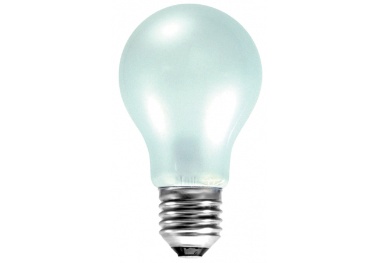Several lighting manufacturers and retailers are reported to be getting around the phase out of the incandescent lamp by marketing industrial lamps as suitable for domestic use.
With the ban on the production of all of the remaining types of domestic-use incandescent lamps coming into effect on 1 September 2012, at least two manufacturers have taken to mass producing more 'rough service' incandescent lamps to tap into the market of customers reluctant to move to more energy efficient lighting.

A rough service lamp manufactured by Bell
They claim that poor drafting of the EU directive means that shops can continue to supply lamps intended for 'industrial use' while manufacturers are allowed to make and sell the incandescent lamps if they are described on the box as 'rough-service lamps' that are not for domestic use.
Several retailers have begun to market rough service lamps as 'ideal' or 'suitable' for home use, with online retailer Lamps2udirect ending the description of a 100 watt pearl rough service lamp with the sentence: 'Also, commonly used domestically around the home as general lighting!'
News sources such as the Daily Mail and The Daily Telegraph, which have long opposed the phase out, have also been quick to alert their readers to the similarities in performance characteristics between industrial and domestic incandescent lamps. An article on the Daily Mail website said: "The rough-service bulbs come in both screw and bayonet versions, and will cost around £1 – not much more than the household bulbs they will replace and half the price of energy-saving alternatives."
Ian Fursland, managing director of The Lamp Company in Hertfordshire, said he had seen increased business from wholesalers and distributors looking to exploit the loophole and admitted that his company would continue to distribute all industrial lamps to meet its clients' needs. "This acceptable product has been there from the start of the EU phase out," he said. "Everybody is manufacturing rough service lamps. This EU ban was not thought out at all - it is absolutely ridiculous. We sell considerable numbers of them.'
He also suggested that the National Measurement Office (NMO), the government body which is responsible for policing the phase out, would find it difficult to prevent manufacturers from producing lamps in this way under the current EU Directive guidelines.
However, manufacturers who have abided by EU guidelines were quick to support the EU directive.
Ian Major, product and marketing manager, UK Lamps, at Havells-Sylvania said: "Incandescent lamps are big energy wasters – converting only 10 per cent of energy to light and 90 per cent to heat. The future is with energy saving alternatives; those wedded to legacy lamp technologies will be left behind."
Mike Simpson, technical and design director at Philips said: "Lighting consumes 19 per cent of electricity globally. This poses a major challenge, in a world facing resource scarcity and climate change. Energy-efficient lighting can help. For an example, a full switch-over to the latest LED lighting would provide very significant energy savings, equating to approximately 130 billion euros per year in reduced running costs. Educating consumers in the options available to them, not just LED, should be a significant focus for the industry, in particular highlighting that there is no need to compromise as energy efficiency does not have to mean poor design or performance."
Neil McLean, strategic business unit leader at Havells Sylvania doubted whether the perceived loophole would make a significant dent in the market: "I suspect that the quantity of lamps that are being sold in this way is insignificant compared to the carbon savings that are being achieved by the phase out," he said.
The ban on production of domestic incandescent lamps brings the UK into line with an EU directive aimed at saving energy. The wording of the EU directive defines a 'special purpose lamp' as 'a lamp not intended for household room illumination because of its technical parameters or because the related product information indicates that it is unsuitable for household room illumination."





